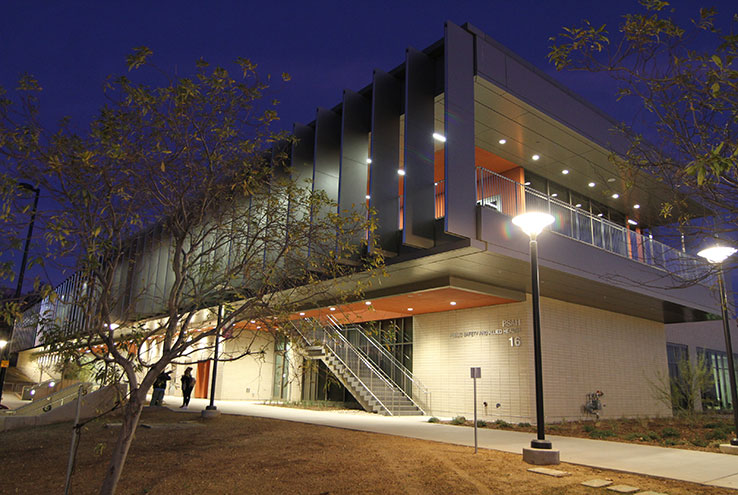New LEED Gold Certified Building Uses Less Water, Energy
Publish Date: Nov. 8, 2017

Crafton Hills College strives to be a green campus, and its new Public Safety and Allied Health Building recently received LEED Gold Certification, meaning it was constructed with materials that lower energy costs and water consumption and provide better air quality.
"Low-flow toilets, for example, use a fraction of the water with each flush as traditional toilets," project manager Brooke Duncan said. "Low-flow faucets help to reduce the amount of water wasted while in use. Materials are selected that resist graffiti and bacteria, being easy to clean and maintain for the Crafton custodial staff. These are just a few examples of the LEED considerations while the project is in design."
The U.S. Green Building Council developed the Leadership in Energy and Environmental Design (LEED) certification system as a way to encourage the construction of energy and resource-efficient buildings. Duncan said green building practices help Crafton save money, increase building efficiency, and should be viewed as an "ethical system for sustainability. This is a responsible approach for this and coming generations."
Projects that are trying to get LEED certification earn points across multiple categories, including energy use and air quality, and can qualify for one of four levels: Certified, Silver, Gold, and Platinum. Crafton has several LEED certified buildings, including the Crafton Center, which is Gold and under consideration to become Platinum, and Canyon Hall, which is Silver.
"LEED certified buildings can drive down operational costs while increasing occupants' productivity in an environmentally responsible manner," Duncan said. "LEED certified buildings help the campus in their sustainability goals across the board."



